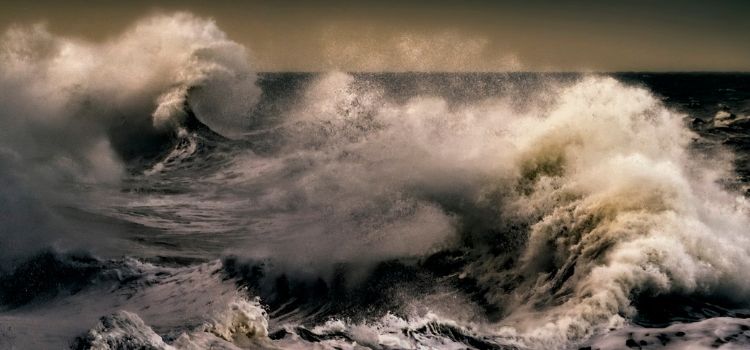Hurricanes are different from regular hurricanes, meaning that people inside buildings are not at risk of dying during the storm. Similarly, people hit by trees hitting buildings are unlikely to die, but 76 percent of storm-related deaths are caused by water.
Contents
Storm surge is the water that moves inland, and hurricanes like Hurricane Katrina have a high rate of storm-related deaths. Although people inside buildings and on the shore are not likely to die, most of those, who died in Katrina drowned.
How do people drown during a hurricane?
Flood waters in a hurricane cause many fatalities. These sudden water surges during hurricanes and flash floods often cause people to drown. They are particularly dangerous because they can be difficult to escape once a person is trapped inside a structure.
The danger is even greater if the individual is over 75. In addition to drowning in the flood waters, people can be electrocuted, trapped in cars, and even killed by electrical currents.
Some examples of the number of people that drown during a hurricane:
- Hurricane Ida – 55 drowning victims
- Hurricane Harvey – 70 drowning victims
- Hurricane Florence – 22 drowning victims
- Hurricane Irma – 7 drowning victims
Surviving a hurricane underwater
What can you do to survive a hurricane underwater? First, you need to know how hurricanes affect marine life. This can have disastrous effects on the ecosystem. Hurricane waves, up to 60 feet high, combine warm surface water with rainwater or colder water with higher salinity.
When this happens, fast-moving waters emerge. The ocean’s pH balance will also be affected, and you may be exposed to various diseases and parasites.
In addition to affecting land life, hurricanes also affect marine life. Since most sea life is slow-moving, it cannot easily escape its habitat before the storm begins. The waves are so strong that they can even trap these animals.
Then, their bodies cannot withstand the pressure changes in the water. So, they may be trapped in a hurricane vortex and die. This situation is particularly hazardous for smaller marine life.
In addition to humans, most sea animals avoid rough surface waters. While dolphins, whales, and sharks avoid rough waters, fish near the surface may feel waves. It is important to note that dolphins, sea turtles, and sharks tend to stay near the coast, making them safe from hurricanes.
They may also escape into deeper water. But, there is still some danger in these creatures. Luckily, they have an instinct to move toward deeper waters.
The most significant threat to life during a hurricane is a storm surge. The storm surge results from warm ocean waters rising and forcing cold water from below. This force increases water levels by 30 feet or more.
This can kill people who are in the area. A hurricane can also cause widespread devastation if the water is shallow enough. As long as you’re wearing protective clothing and using appropriate techniques, you should be safe.
Swimming in a hurricane
While a storm can be exciting, it’s also dangerous. Strong ocean currents and undertows can carry swimmers away from shore. To avoid being swept out to sea, you should swim parallel to the shore and diagonally back to shore.
If you get caught in one of these currents, try to swim back to shore while remaining calm and waving for a lifeguard. You can also drown while surfing in the ocean.
Even if a hurricane doesn’t directly hit the United States, coastal flooding is still a risk. In addition to hazardous debris, floodwater may contain glass fragments, metal objects, and power lines. Furthermore, people who swim in floodwaters are exposed to contaminants. Hurricane season is also a prime time for pollution.
The storm in New Orleans, known as Hurricane Katrina, was responsible for five hundred and seventy spills of hazardous chemicals, petroleum products, and automobile leaks. More than ten million gallons of oil and petroleum were released into the seas.
Sudden drowning may be prevented by knowing what causes it. While the cause of a sudden drowning is often unknown, the symptoms are similar to those experienced by victims of other types of disasters.
For example, if you have a medical condition or are suffering from a mental health problem, it’s essential to get medical help as soon as possible. Often, the symptoms of a drowning crisis result from traumatic events, trauma, or a medical condition. Taking a swim in a hurricane can cause you to become unconscious.
Moreover, you can die while swimming in a rip current. Rip currents are powerful, narrow streams of fast-moving water that can pull swimmers away from the shore. 174 people have drowned by a rip current on the United States’ Eastern and South Carolina beaches since 2000.
Eighty percent of these deaths are visitors. However, lifeguards often tell swimmers to swim parallel to shore and back to land at an angle rather than attempting to fight the rip current.
How many people drown in hurricanes?
Unlike regular hurricanes, which will kill people in the house, they will not necessarily be killed by trees, generators, and electricity. But the deaths of people in hurricanes are the result of other factors, like primitive technology and weather patterns.
While our ancestors often braved storms to help save orphans and other humans, modern people must deal with electricity, generators, and other hazards. The result is that many people drown.
When studying hurricane deaths, the National Weather Service distinguishes between deaths during and after the storm. Direct fatalities include drownings and hurricane-related deaths, some of which are caused by flooding.
In Hurricane Matthew, for example, 78 percent of those who drowned were still in their cars as they had fled the safety of their homes. The remaining twenty-seven percent of fatalities were caused by post-tropical storms such as Hurricane Ida, which made landfall as a tropical storm.

